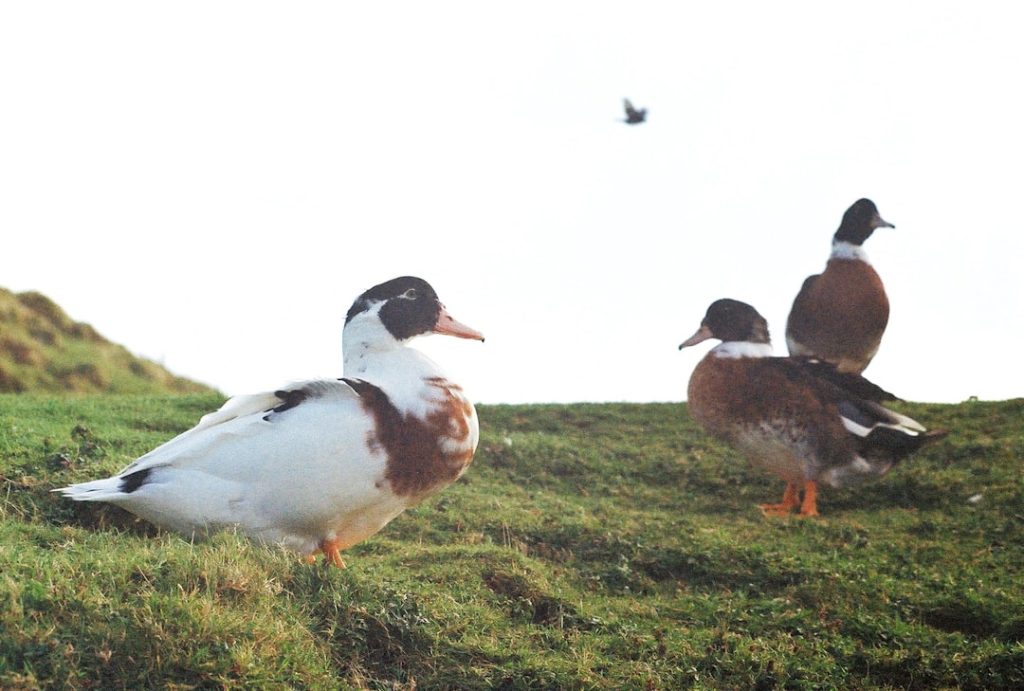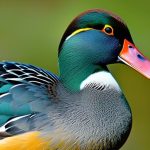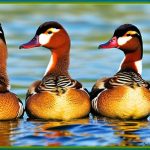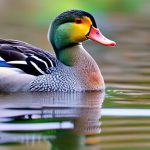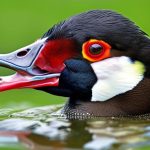Breeding season for ducks is a crucial time in their annual cycle, as it is the period when they engage in courtship rituals, nesting, egg-laying, and caring for their young. This season typically occurs in the spring and summer months when the weather is warmer and food sources are more abundant. During this time, ducks exhibit specific behaviors and habits that are essential for the survival and continuation of their species. Understanding the breeding season for ducks is important for conservation efforts and for ensuring the protection of their habitats.
Ducks are known for their migratory nature, and breeding season varies depending on the species and their geographic location. For many species, breeding season begins in the spring when they return to their breeding grounds after wintering in warmer regions. The onset of breeding season is triggered by environmental cues such as increasing daylight, temperature, and food availability. As ducks prepare for breeding, they undergo physiological changes that enable them to engage in courtship rituals, build nests, lay eggs, and care for their offspring. Breeding season is a critical time for ducks, and understanding the various aspects of their behavior and habits during this period is essential for their conservation and management.
Table of Contents
- 1 Behavior and courtship rituals during breeding season
- 2 Nesting and egg-laying habits of ducks
- 3 Incubation period and care of ducklings
- 4 Challenges and threats during breeding season
- 5 Conservation efforts and protection of duck breeding habitats
- 6 Importance of understanding and respecting duck breeding season
- 7 FAQs
Key Takeaways
- Breeding season for ducks typically occurs in the spring and early summer, when they engage in courtship rituals and nesting behaviors.
- During breeding season, ducks exhibit complex courtship behaviors such as head bobbing, preening, and vocalizations to attract mates.
- Female ducks build nests in secluded areas near water, using materials like grass and feathers, and lay a clutch of eggs over a period of several days.
- After the eggs are laid, the female duck will incubate them for about 28 days, and once hatched, she will care for the ducklings and lead them to water.
- Breeding season poses challenges for ducks, including habitat loss, predation, and human disturbance, making conservation efforts and protection of breeding habitats crucial for their survival. Understanding and respecting duck breeding season is essential for their conservation and well-being.
Behavior and courtship rituals during breeding season
During breeding season, ducks engage in a variety of behaviors and courtship rituals to attract mates and establish pair bonds. Male ducks often display elaborate courtship behaviors to impress females, such as head bobbing, wing flapping, and vocalizations. These displays are intended to demonstrate the male’s fitness and suitability as a mate. Female ducks, on the other hand, may engage in subtle behaviors to indicate their receptiveness to mating, such as preening, head dipping, and vocalizations. Once a pair bond is established, male and female ducks will engage in synchronized behaviors such as swimming together, preening each other’s feathers, and engaging in mutual displays of affection.
Courtship rituals also involve the selection of nesting sites, which can be a competitive process among male ducks. Males may engage in aggressive displays to establish territory and defend potential nesting sites from rivals. Once a nesting site is chosen, the female will begin building the nest using surrounding vegetation and down feathers to create a secure and comfortable environment for laying eggs. Understanding the behavior and courtship rituals of ducks during breeding season is important for conservation efforts, as it provides insight into the factors that contribute to successful reproduction and population sustainability.
Nesting and egg-laying habits of ducks
Nesting and egg-laying are crucial aspects of the breeding season for ducks, as they are essential for the continuation of their species. Female ducks typically seek out secluded and well-concealed nesting sites near water bodies, such as marshes, ponds, or wetlands. The choice of nesting site is important for providing protection from predators and ensuring access to food and water for the mother and her offspring. Once a suitable nesting site is found, the female will begin constructing the nest using a combination of twigs, leaves, grass, and down feathers to create a secure and insulated structure.
After the nest is completed, the female will lay a single egg each day until she has a full clutch, which can range from 6 to 12 eggs depending on the species. The eggs are usually white or off-white in color and are designed to provide insulation and protection for the developing embryos. The female will then begin the process of incubating the eggs, using her body heat to keep them warm and turning them regularly to ensure even development. Understanding the nesting and egg-laying habits of ducks is important for conservation efforts, as it provides valuable information about the specific habitat requirements needed for successful reproduction.
Incubation period and care of ducklings
After the eggs are laid, the incubation period begins, during which the female duck will diligently care for her eggs until they hatch. The length of the incubation period varies depending on the species of duck but typically lasts between 25 to 30 days. During this time, the female will remain on the nest, only leaving briefly to feed and bathe before returning to keep her eggs warm and protected. Incubation is a critical period for the development of the embryos, as they rely on a stable and warm environment to grow and develop properly.
Once the eggs hatch, the female will lead her ducklings to water within a day or two of hatching. Ducklings are precocial, meaning they are born with their eyes open and are able to walk, swim, and feed themselves shortly after hatching. The mother duck will provide guidance and protection for her ducklings as they learn to navigate their environment and find food. Understanding the incubation period and care of ducklings is important for conservation efforts, as it highlights the vulnerability of young ducklings and the importance of protecting their habitats during this critical stage of their development.
Challenges and threats during breeding season
Breeding season poses several challenges and threats to ducks that can impact their reproductive success and survival. One of the primary challenges during this time is finding suitable nesting sites that provide protection from predators and environmental disturbances. Loss of habitat due to human development, pollution, and climate change can reduce the availability of nesting sites for ducks, leading to decreased reproductive success. Additionally, predation by mammals, birds of prey, and other animals can pose a significant threat to nesting females and their eggs.
Another challenge during breeding season is competition for resources among males, which can lead to aggressive encounters and territorial disputes. Male ducks may engage in physical confrontations to establish dominance and secure access to females, leading to injuries or even death in some cases. Human activities such as hunting, disturbance from recreational activities, and habitat destruction can also disrupt courtship rituals and nesting behaviors, leading to decreased reproductive success for ducks. Understanding the challenges and threats faced by ducks during breeding season is crucial for implementing conservation measures that protect their habitats and ensure their long-term survival.
Conservation efforts and protection of duck breeding habitats
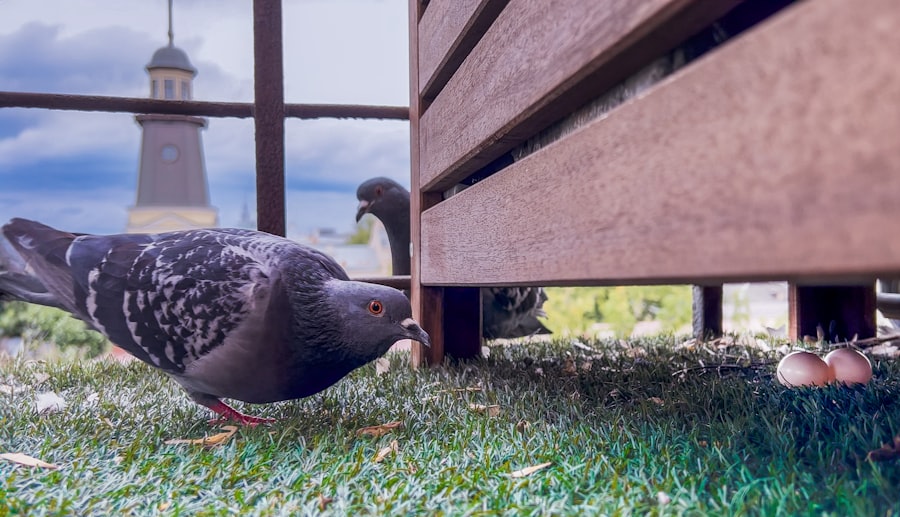
Conservation efforts aimed at protecting duck breeding habitats are essential for ensuring the survival of duck populations during breeding season. One key conservation strategy is the preservation and restoration of wetlands, marshes, ponds, and other water bodies that serve as critical nesting sites for ducks. These habitats provide essential resources such as food, water, shelter, and nesting materials that are vital for successful reproduction. By conserving these habitats, we can help maintain healthy duck populations and support their breeding efforts.
Another important conservation measure is the implementation of regulations and management practices that protect ducks from human disturbances during breeding season. This can include establishing protected areas where hunting and recreational activities are restricted during critical times of the year when ducks are nesting or caring for their young. Educating the public about the importance of respecting duck breeding habitats and minimizing human impacts can also help reduce disturbances that can disrupt courtship rituals and nesting behaviors.
Furthermore, collaborative efforts between government agencies, conservation organizations, landowners, and local communities can help implement habitat conservation programs that benefit ducks during breeding season. These programs can include habitat restoration projects, land acquisition for conservation purposes, and outreach initiatives that promote responsible land management practices. By working together to protect duck breeding habitats, we can ensure that these vital areas remain intact for future generations of ducks to thrive.
Importance of understanding and respecting duck breeding season
Understanding and respecting duck breeding season is crucial for promoting the conservation and protection of these iconic waterfowl species. By gaining insight into the behavior, habits, and challenges faced by ducks during breeding season, we can implement effective conservation measures that support their reproductive success and population sustainability. Respecting duck breeding habitats by minimizing disturbances from human activities such as hunting, development, pollution, and recreational use is essential for maintaining healthy duck populations.
Furthermore, understanding duck breeding season allows us to appreciate the intricate behaviors and rituals that ducks engage in to ensure the survival of their species. By observing these natural processes with respect and admiration, we can foster a deeper connection with wildlife and promote a culture of conservation that values the importance of protecting natural habitats for all species. Ultimately, by understanding and respecting duck breeding season, we can contribute to the long-term preservation of these remarkable birds and the ecosystems they depend on for survival.
If you’re interested in learning more about the best practices for breeding season for ducks, you might also want to check out this informative article on where to put a chicken coop. Understanding the ideal environment for poultry can provide valuable insights into creating a suitable habitat for ducks during their breeding season.
FAQs
What is the breeding season for ducks?
The breeding season for ducks typically occurs in the spring and summer months, with variations depending on the species and geographic location.
How do ducks choose a mate during breeding season?
Ducks often engage in courtship displays, such as head bobbing, tail wagging, and vocalizations, to attract a mate. Once a pair forms, they will often stay together for the duration of the breeding season.
Where do ducks build their nests during breeding season?
Ducks typically build their nests in secluded areas near water, such as marshes, ponds, or wetlands. They may use a variety of materials, including grasses, reeds, and down feathers, to construct their nests.
How many eggs do ducks lay during the breeding season?
The number of eggs laid by ducks varies by species, but it can range from a few to a dozen or more. The female will then incubate the eggs for a period of time until they hatch.
What do ducks eat during the breeding season?
During the breeding season, ducks may consume a variety of foods, including aquatic plants, insects, small fish, and crustaceans. This diverse diet helps provide the necessary nutrients for egg production and rearing of young ducklings.
Meet Walter, the feathered-friend fanatic of Florida! Nestled in the sunshine state, Walter struts through life with his feathered companions, clucking his way to happiness. With a coop that’s fancier than a five-star hotel, he’s the Don Juan of the chicken world. When he’s not teaching his hens to do the cha-cha, you’ll find him in a heated debate with his prized rooster, Sir Clucks-a-Lot. Walter’s poultry passion is no yolk; he’s the sunny-side-up guy you never knew you needed in your flock of friends!

